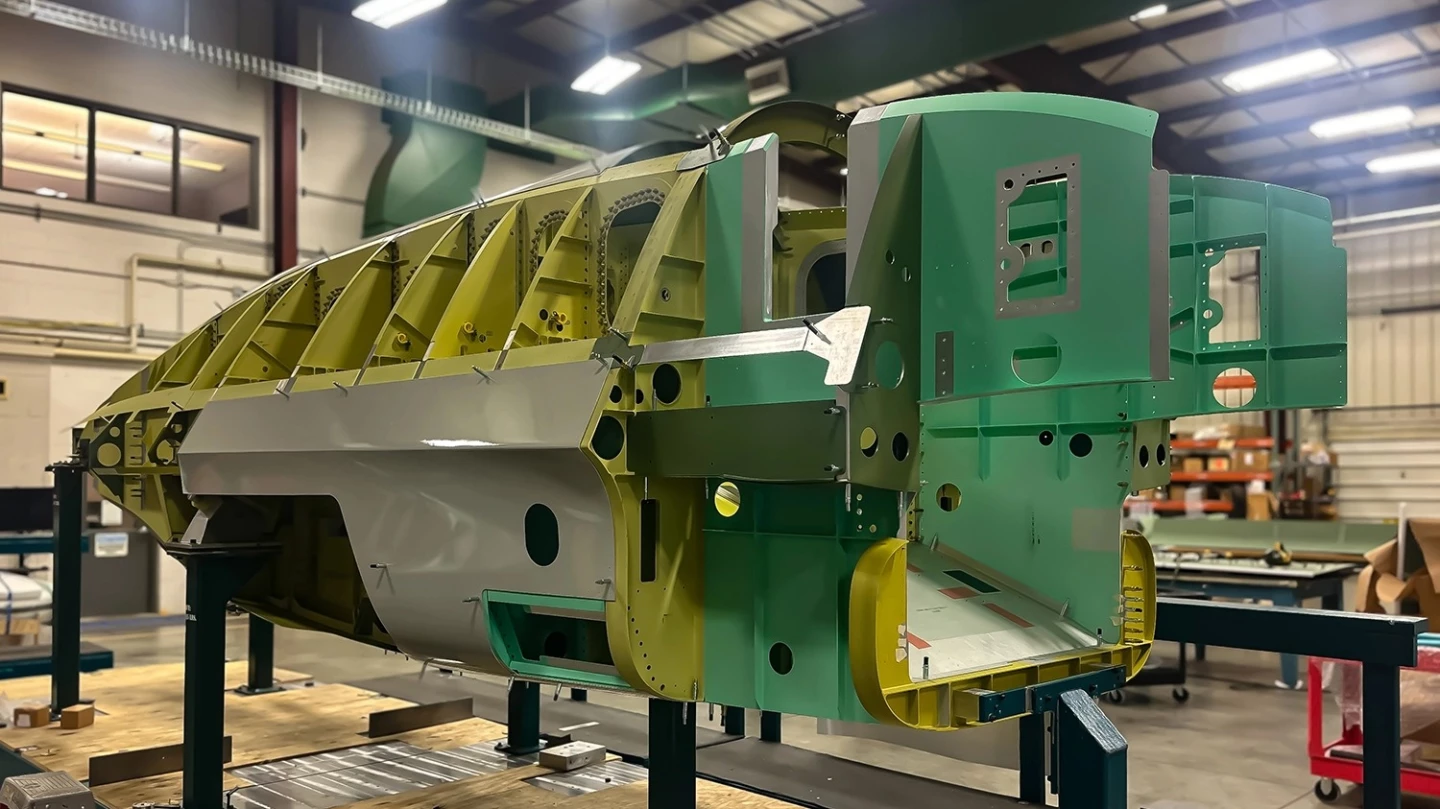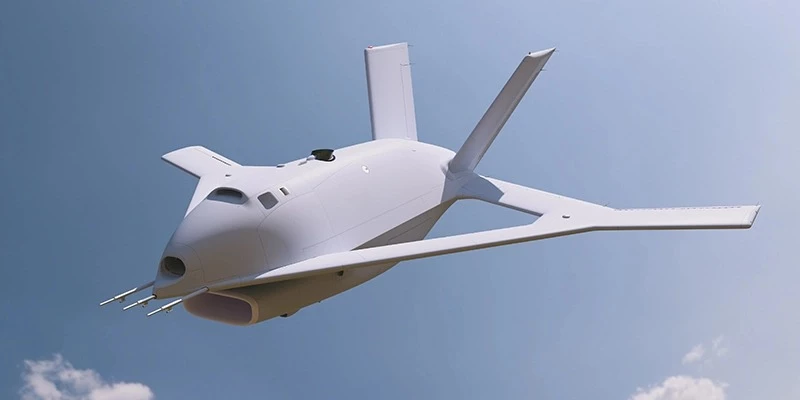DARPA's X-65, that replaces conventional aircraft flight controls with puffs of air, is coming together at Boeing subsidiary Aurora’s Bridgeport, West Virginia facility. The fuselage is taking shape and awaits its radical wing design.
With its advanced diamond wing, the X-65 Control of Revolutionary Aircraft with Novel Effectors (CRANE) uncrewed demonstrator looks like it sneaked out of a science fiction movie. It's already strange enough with its odd angles and unconventional flight services, but its purpose makes it even stranger as more details are released about its design.
The goal of the X-65 is to study how to do away with things like rudders, flaps, ailerons and other control surfaces. True, these are necessary for a small thing like making an aircraft able to fly, but they do have inherent drawbacks.
For one thing, they rely on complex mechanical systems to move, control systems to operate them, and structural elements to hold it all together, which means weight, complexity, and money. Another problem is that all the gaps, hinges, and deflecting surfaces for these control surfaces result in more drag, which reduces the aircraft's efficiency.
About the size of a jet trainer, the X-65 aims at replacing all of this with a new Active Flow Control (AFC) system, where holes in the wings and the empennage shoot out carefully controlled jets of air from 14 nozzles to disrupt the airflow streaming over the aircraft, turning areas into virtual control surfaces.
By selectively activating these nozzles on one side of the aircraft or on sections of the wing, the AFC can instantly increase lift on one side by inducing roll, change the downwash at the rear to control pitch, or manipulate flow over the vertical surfaces to control yaw.

In addition, the system can increase lift by controlling airflow on the leading edge of the wing, and the lack of control surfaces makes the aircraft inherently more stealthy because there's less chance of radar signals finding angles to bounce off of.
So why the weird diamond wing?
The diamond wing is a low-aspect-ratio, straight-edged appendage that was chosen because, according to the designers, it's the optimum testbed for the CRANE program. The straight edges of the wing and the variety of acute sweep angles enable the X-65 to generate different types of airflow patterns across its surfaces. It's also highly susceptible to flow separation or breakdown of smooth airflow. The AFC system is designed to counteract and manipulate this breakdown. In fact, it exploits it in order to create the virtual control surfaces.
Because this is a test aircraft, the X-65 incorporates conventional moving control surfaces. DARPA describes these as "training wheels" that provide an added margin of safety, and in the early flights will establish a performance baseline against which to measure later flights using the AFC system. During these flights, the aircraft will reach transonic speeds, yet the new system is also expected to improve the performance of the diamond wing at slower speeds and high angles of attack – a part of the flight envelope that it generally handles poorly.
The X-65 is a few years behind schedule due to technical difficulties, and the maiden flight is now set for late 2027. After the CRANE program is completed, its replaceable modular components will allow it to be used as a testbed for later projects. This modularity also gives engineers the ability to use different nozzle configurations during current testing.
"We’re excited to continue our longstanding partnership with DARPA to complete the build of the X-65 aircraft and demonstrate the capabilities of active flow control in flight," said Larry Wirsing, VP of aircraft development at Aurora Flight Sciences. "The X-65 platform will be an enduring flight test asset, and we’re confident that future aircraft designs and research missions will be able to leverage the underlying technologies and flight test data."
Source: Aurora Flight Science






